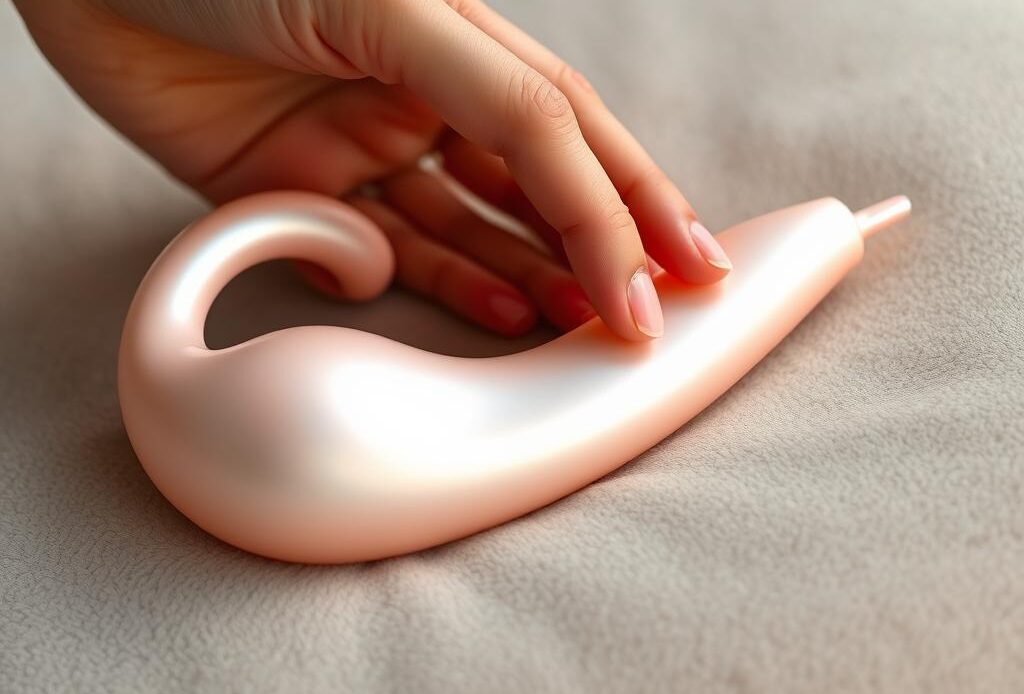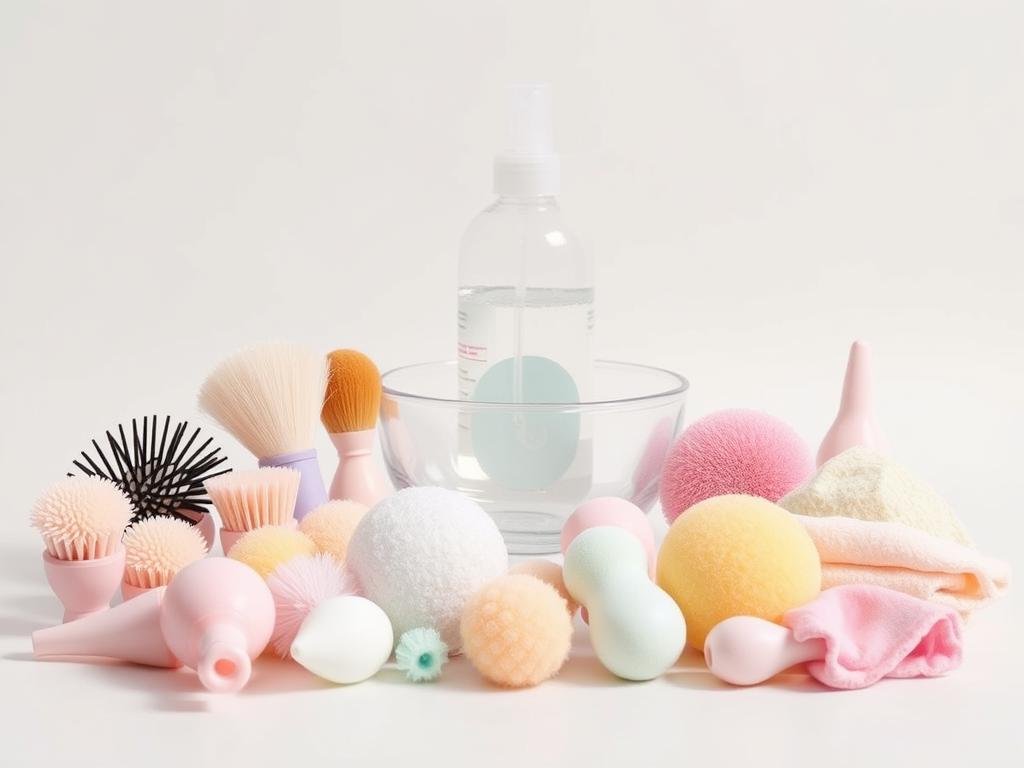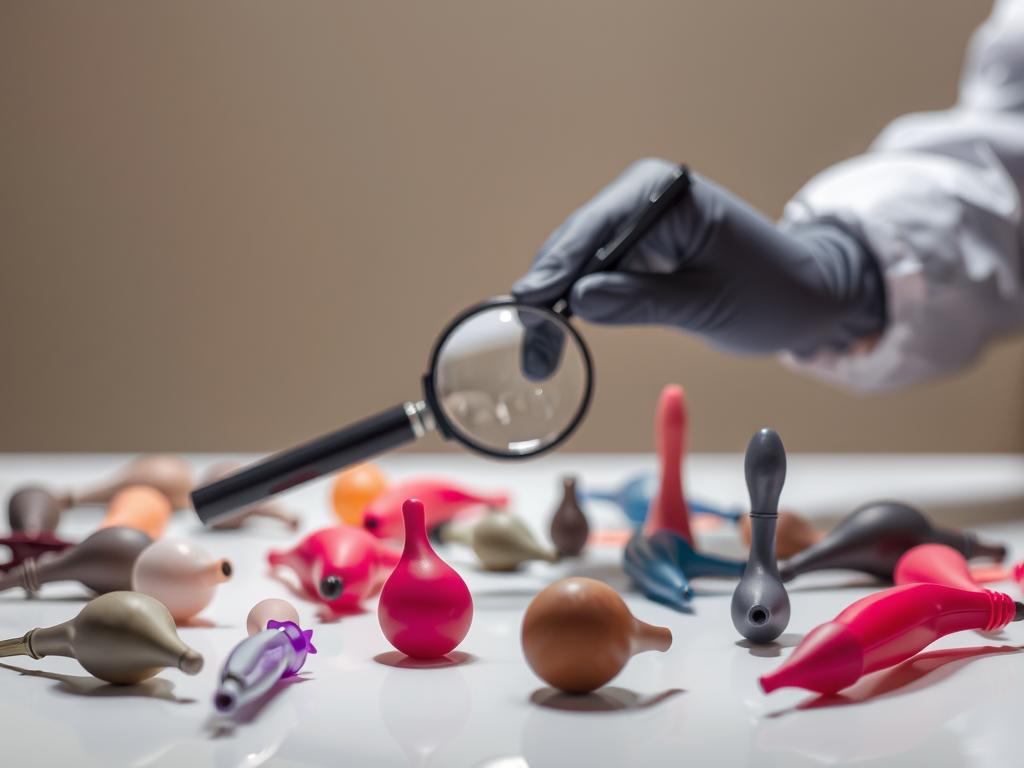
Keeping your personal wellness items in top shape doesn’t require magic—just a little know-how. Whether you’re new to these products or looking to refresh your routine, proper care ensures they stay hygienic and functional for years. Let’s dive into why a consistent cleaning regimen matters and how simple steps can make a big difference.
Experts like Bianca Alba emphasize that material compatibility is key. For example, waterproof designs handle submersion, while others need gentle surface cleaning. Always check manufacturer instructions—mishandling batteries or using harsh cleaners causes 40% of malfunctions. A soft cloth and mild soap work wonders for most items, especially when paired with thorough drying.
Did you know 34% of users who skip proper hygiene face recurring issues? Regular care isn’t just about longevity—it’s about safety. Nonporous options like silicone tolerate boiling water, while porous materials need gentler methods. Our step-by-step cleaning guide simplifies this process, helping you avoid 90% of common health concerns linked to poor maintenance.
Key Takeaways
- Regular cleaning prevents bacterial growth and extends product lifespan
- Material type (waterproof vs. splashproof) dictates safe cleaning methods
- Always follow manufacturer guidelines for water exposure and battery removal
- Proper hygiene reduces infection risks by up to 90%
- Store items in dry, breathable containers to slow bacterial regrowth
Understanding Your Sex Toy’s Materials
Materials matter more than you think when it comes to caring for personal wellness items. Knowing whether your item is porous or nonporous determines how effectively you can clean it—and how long it’ll stay bacteria-free.
Spotting the Difference
Porous materials like jelly or rubber have microscopic gaps that trap moisture and germs. Nonporous options—silicone, glass, or stainless steel—have smooth surfaces that resist bacterial buildup. Always check labels or product descriptions for terms like “body-safe” or “hygienic-grade.”
| Material Type | Examples | Cleaning Difficulty | Safety Tips |
|---|---|---|---|
| Porous | Jelly, rubber, fabric | High (traps bacteria) | Replace every 6-12 months |
| Nonporous | Silicone, glass, ABS plastic | Low (easy to disinfect) | Boil or use 10% bleach solution |
Why Composition Dictates Care
Nonporous items tolerate intense cleaning methods, while porous ones need gentle care. A soft toothbrush works well for textured surfaces, but avoid abrasive tools. For battery-operated products, always remove power sources before washing to prevent damage.
Proper identification isn’t just about cleanliness—it’s about safety. Items with hidden crevices may require specialized brushes, as highlighted in our guide to safe use practices. When in doubt, consult manufacturer guidelines to avoid degrading materials or voiding warranties.
Why Regular Cleaning is Vital for Our Intimate Health
Your health deserves more than a quick rinse. Every time we use personal items, they collect microorganisms like bacteria, viruses, and fungi. These invisible guests thrive in warm environments and can lead to infections if not properly addressed.
Research shows improper hygiene increases risks of yeast infections and other issues by 60%. For example, porous surfaces trap fluids, creating breeding grounds for harmful organisms. That’s why using soap water and a soft cloth matters—it breaks down residues that simple rinsing misses.
| Material | Cleaning Method | Infection Risk |
|---|---|---|
| Silicone/Glass | Boiling or disinfectant spray | Low (nonporous) |
| Rubber/Jelly | Mild soap + thorough drying | Moderate |
| Fabric | Machine wash + air-dry | High (requires frequent replacement) |
Consistent care cuts infection risks dramatically. A study by Brown University confirms that proper cleaning methods eliminate 92% of pathogens. Nonporous options like silicone simplify this process, but all items need attention after use.
We prioritize safety by choosing the right techniques. Warm water with fragrance-free soap works for most surfaces. For shared items, consider antibacterial sprays. Remember—your well-being isn’t just about today. It’s about creating healthy habits that protect you long-term.
Sex Toy Maintenance: Best Practices and Safety Tips
Keeping your collection fresh starts with the basics—soap selection matters more than you might guess. Experts like Bianca Alba remind us: “Harsh chemicals strip protective coatings and disrupt natural pH levels”. Opt for fragrance-free cleansers to protect sensitive areas while effectively breaking down residues.

Soap Savvy 101
Mild formulas work best—look for pH-balanced options without dyes. Antibacterial varieties aren’t necessary and may damage silicone or rubber over time. Always test new cleaners on small areas first, especially with colorful products that might fade.
Tool Time Tactics
Designate separate cleaning supplies to avoid cross-contamination. A soft-bristled toothbrush reaches textured surfaces without scratching. For battery-operated items, remove power sources immediately after use. Waterproof models handle rinsing better, but always check manufacturer guidelines first.
Overcleaning causes cracks in porous materials like jelly. Stick to quick washes with lukewarm water and air-dry thoroughly. Store items in breathable cotton bags rather than plastic cases to prevent moisture buildup. Simple habits like these keep your routine efficient and effective.
“Dedicated tools prevent transferring bathroom germs to your products”
Step-by-Step Guide: Cleaning Your Toys by Material Type
Proper care starts with matching your cleaning routine to what your items are made of. Let’s break down the best approaches for different materials, ensuring every product stays fresh and functional.
Nonporous Champions: Glass, Steel & Silicone
These durable products handle intensive cleaning. Begin by removing batteries or unplugging devices. Follow this 4-step process:
- Rinse with lukewarm water
- Scrub using mild soap and a soft brush
- Boil silicone/glass items for 3-5 minutes (if approved)
- Air-dry completely before storage
“Nonporous items are the easiest to sanitize—their smooth surfaces leave pathogens nowhere to hide.”
Gentle Care for Porous Materials
Jelly, rubber, and fabric need a lighter touch. Never submerge these—moisture gets trapped in microscopic pores. Instead:
- Wipe surfaces with a damp cloth
- Use soap water sparingly
- Dry immediately with lint-free towels
Consider using protective barriers during use for easier cleanup. Always check manufacturer guides—some rubber blends degrade if cleaned incorrectly.
Cleaning Solutions and Tools for Optimal Hygiene
Safe cleaning starts with selecting products that respect both material durability and health needs. The right agents prevent damage while keeping our intimate moments worry-free.
Gentle Formulas Make All the Difference
Harsh chemicals? No thanks. Mild, unscented soap preserves your items’ surface integrity and protects natural pH levels. Fragrance-free options reduce irritation risks—critical for sensitive areas.
Specialized sprays offer convenience without compromising safety. Many require no rinsing, perfect for battery-operated devices. Always check labels: some solutions work only on nonporous surfaces.
| Cleaning Agent | Best For | Usage Tips | Avoid If |
|---|---|---|---|
| Mild Unscented Soap | Nonporous materials | Mix with warm water | Using colored/dyed bars |
| Specialized Sprays | Battery compartments | Let air-dry 5 minutes | Item has cracks |
| Water Only | Sensitive surfaces | Lukewarm rinse | Manufacturer prohibits |
Even with sprays, a quick water rinse ensures no residue remains. For electronics, open battery cases during drying to prevent moisture traps. We recommend breathable storage cases over sealed bags.
Following these methods keeps our collection fresh and functional. As Bianca Alba notes: “Proper tools prevent 80% of material degradation issues”. Your wellness deserves this attention to detail.
How to Air-Dry and Store Your Sex Toys Properly
Drying and storage might seem like afterthoughts, but they’re the final guardians of cleanliness. Moisture trapped in crevices or dust settling on surfaces can undo even the most thorough cleaning routine. Let’s explore how simple habits protect both your collection and well-being.
Best Practices for Lint-Free Drying
Patience pays off here. After washing, shake off excess water and place items on a fresh, lint-free towel. Avoid rubbing—gentle dabbing prevents scratches. For textured surfaces, let gravity do the work by propping them upright.
Bianca Alba notes: “Airflow is your ally. Never rush drying with hair dryers—heat warps materials.” Give pieces 1-2 hours in a dust-free area. Check seams and battery compartments for hidden dampness before storing.
- Use unbleached paper towels for silicone to avoid dye transfer
- Rotate items halfway through drying
- Store only when completely moisture-free
Original packaging isn’t just for first impressions—it’s designed to shield products from light and particles. No box? Breathable cotton bags work wonders. Keep your storage spot cool and dry—bathroom cabinets often fail both tests.
“Think of storage as a clean slate. Each time you put items away, you’re setting the stage for next use.”
These steps aren’t just about organization. They’re about creating a safety net that keeps your moments worry-free. When we honor our products’ needs, they return the favor—no surprises, just reliability.
Avoiding Common Cleaning Mistakes
Even with good intentions, small errors can shorten your items’ lifespan. Let’s explore how to dodge pitfalls that turn routine care into accidental damage.
Risks of Overusing Cleaning Products
More soap doesn’t mean cleaner results. Harsh chemicals break down surfaces—especially in porous materials like jelly. Self magazine confirms: “Sprays require rinsing despite their convenience claims.” Stick to gentle formulas and limit deep cleans to once weekly.
| Mistake | Consequence | Fix |
|---|---|---|
| Bleach on silicone | Discoloration & texture loss | Use 70% isopropyl alcohol |
| Submerging battery units | Electrical failure | Remove power sources first |
| Dishwasher cycles | Material warping | Handwash only |
Dishwasher Myths and Battery Concerns
High heat and detergent pods damage delicate textures. Nonporous items might survive a cycle, but manufacturers rarely recommend it. For battery-operated devices, water exposure during cleaning causes 62% of malfunctions according to recent surveys.
Always use a damp cloth for quick wipe-downs between thorough washes. Store items away from dust-prone areas, and let them air-dry fully before reassembling. These simple steps keep your collection safe without extra effort.
Maintaining a Clean Sex Life with Well-Cared Toys
A fresh approach to intimate wellness starts with care routines that protect both pleasure and health. Research from Self confirms that consistent hygiene practices reduce harmful bacteria by 89%, creating safer experiences. Well-maintained items perform better, last longer, and keep our moments worry-free.
Regular cleaning preserves material integrity while preventing infections. For porous options like jelly or fabric, experts suggest using condoms as an extra barrier. Silicone and glass benefit from thorough sanitization—boiling or specialized sprays work wonders. Always dry items completely with a soft cloth before storing them in breathable bags.
Why does this matter? Bacteria thrive in moist environments, and neglected surfaces become breeding grounds. A simple post-use rinse with mild soap removes 92% of pathogens, according to expert-approved maintenance routines. Establishing a schedule ensures every session begins with confidence.
“Hygiene isn’t just about cleanliness—it’s about respecting your body’s needs while maximizing enjoyment.”
Storage plays a key role too. Keep items separate to avoid material reactions, and never toss them into dishwashers—harsh cycles damage electronics and textures. Instead, tuck everything into individual cotton pouches away from humidity.
By prioritizing these habits, we create a foundation for vibrant intimacy. Clean tools mean fewer interruptions and more focus on connection. After all, care isn’t a chore—it’s an investment in joyful experiences.
Additional Tips for Extending the Longevity of Our Toys
What if simple habits could add years to your favorite items? Beyond daily cleaning, proactive care keeps them performing like new. Let’s explore smart strategies that go beyond the basics.

Regular Inspections and Replacing Parts
Monthly checkups catch small issues before they escalate. Look for cracks, discoloration, or texture changes—especially in porous materials. Bianca Alba advises: “Faded colors often signal material breakdown. Don’t wait for odors or stickiness to act.”
Battery compartments deserve special attention. Corroded contacts reduce performance and risk leaks. Swap old batteries promptly, and store spares in a sealed case. For rechargeable models, check charging ports for dust buildup.
- Inspect seams and buttons during cleaning
- Replace silicone rings or O-rings every 6 months
- Retire items with peeling surfaces immediately
Storage plays a role too. Keep porous and nonporous products separate to prevent material reactions. A breathable cotton bag protects against dust while allowing airflow. For shared use between partners, consider dedicated cases to avoid cross-contamination.
“A two-minute inspection during your routine can prevent 70% of common malfunctions.”
Set calendar reminders for deep checks every 90 days. Focus on areas exposed to water or friction. With consistent care, your collection stays reliable, safe, and ready for action.
Conclusion
Caring for intimate products is simpler than many think—when you know the essentials. Recognizing whether you’re handling porous materials or durable silicone toys shapes your entire care routine. Bianca Alba reminds us: “Material checks prevent 80% of hygiene issues”—a truth echoed by Self Magazine’s storage recommendations.
Gentle, unscented cleansers protect both your items and health. Always remove batteries before washing, and skip the dishwasher—its harsh cycles damage delicate surfaces. Regular inspections catch early signs of wear, while breathable storage cases keep dust at bay.
These habits aren’t just about cleanliness. They’re about honoring your well-being while extending product life. By matching care methods to materials and staying consistent, you create safer experiences that last.
Ready to transform your routine? Start today. Your future self—and your collection—will thank you.
FAQ
How do I know if my product is porous or nonporous?
Nonporous items like glass, stainless steel, or medical-grade silicone (found in brands like We-Vibe) feel smooth and don’t absorb liquids. Porous options, such as jelly or rubber, have a softer texture and can trap bacteria over time. A quick texture test helps—nonporous surfaces resist moisture absorption.
Can I use regular hand soap to clean intimate items?
We recommend mild, fragrance-free soaps (like Dr. Bronner’s Unscented) or specialized cleaners from brands like Lovehoney. Harsh chemicals or scented products may irritate sensitive areas or degrade materials like silicone or rubber.
What’s the safest way to dry vibrators or silicone products?
Pat them with a lint-free cloth or air-dry on a clean towel. Avoid leaving rubber or jelly items in direct sunlight, as heat can warp their shape. For stainless steel or glass, a quick towel dry prevents water spots.
Are dishwashers safe for cleaning glass or metal products?
While some glass or stainless steel items can handle a dishwasher’s top rack, we suggest handwashing to avoid harsh detergents. Always remove batteries first—water exposure can damage electronics in waterproof toys like those from Lelo.
How often should I replace porous items like jelly or rubber?
Inspect them every 3–6 months for discoloration, odors, or texture changes. Porous materials harbor bacteria more easily, so replacing them sooner (or using condoms as a barrier) reduces infection risks.
Can I use coconut oil with silicone products?
Yes! High-quality silicone (like from Dame Products) is oil-friendly. However, avoid oil-based lubes with latex condoms or rubber items—they can degrade the material over time.
What’s the best storage solution to prevent dust buildup?
Keep items in breathable fabric bags (like those from Liberator) or original cases. Avoid plastic bags, which trap moisture and encourage mold growth. Separate storage also prevents materials like silicone and rubber from reacting.
Do UV sterilizers work for nonporous items?
UV devices like the LumaSoothe can sanitize glass or steel, but check manufacturer guidelines first. Silicone may degrade under prolonged UV exposure, so stick to soap and water for daily cleaning.

